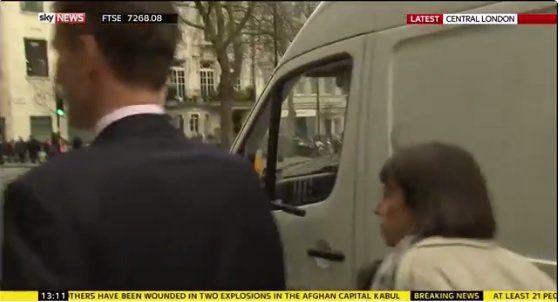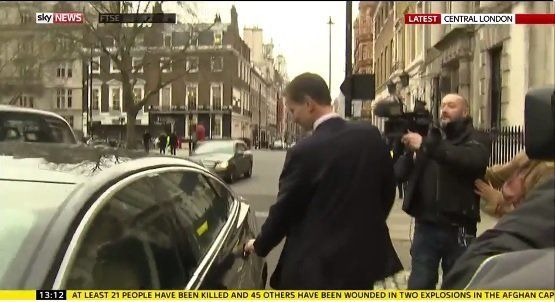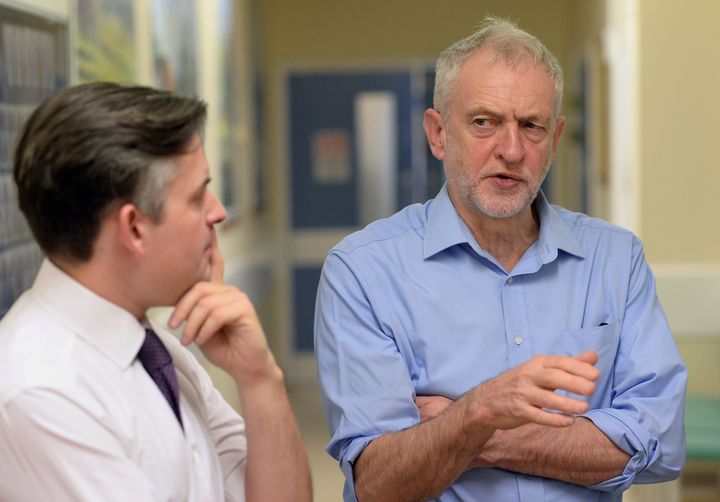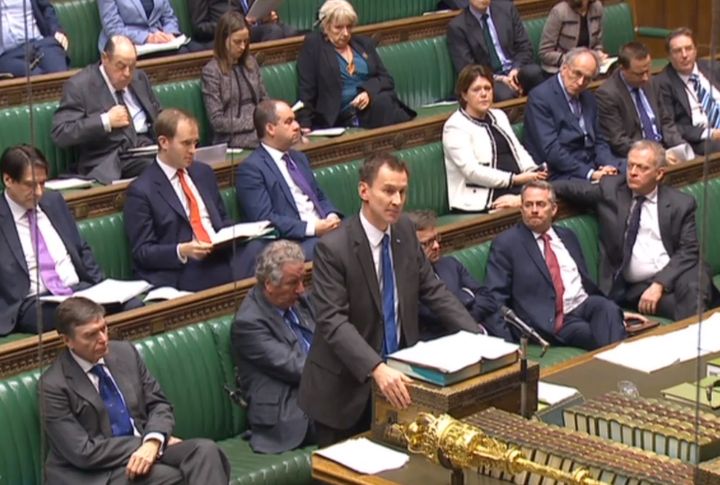Health Secretary Jeremy Hunt was accused of “running away” from the latest NHS controversy after he refused to answer questions from TV reporter about hospital waiting times.
The Cabinet minister maintained a stony silence as Sky News’s Beth Rigby chased him down the street to ask if he would protect the four-hour waiting target for Accident & Emergency departments.
Hunt sparked a row on Monday when he told MPs that A&E treatment was for those with “urgent problems” and hinted that the flagship target could only be protected if those with “minor” ailments stayed away.
Labour instantly claimed he was trying to refine the four-hour limit in a bid to mask the winter health “crisis”, with many hospitals lacking enough beds to cope with people who feel they can’t get seen by their local GP.
The Health Secretary, who insists he sticks by the target, was ambushed by reporters following a speech he made to think tank The King’s Fund in central London on Tuesday.

In the TV footage (click above), Hunt is shown walking away from the questions, only to have to double back on himself as he tries to find his chauffeur-driven ministerial car.
Rigby asks him: ‘Are you now saying you are not scrapping four-hour waiting times or watering it down? The public will want to know, Mr Hunt.”
Hunt replies: “Sorry Beth I’ve answered questions about this already.”

The Sky News reporter responded: “But you didn’t answer questions on this. You said it was over-interpreted in the House of Commons and you didn’t want to water it down. Is that what you’re saying?
“You’ve also got Mr Hassan [Taj Hassan, President of the Royal College of Emergency Medicine], saying one in four emergency services are in crisis, Mr Hunt.”
Hassan told The Times on Tuesday: “When it gets below 75 per cent it becomes very overcrowded and that is when it becomes unsafe.
“There are delays in assessment of patients, there are delays in pain relief, there are delays in antibiotics being given, and basic patient dignity is compromised.”

Shadow Health Secretary Jonathan Ashworth, who had already accused Hunt of ‘blaming the patients’ for Government failures, told The Huffington Post that Hunt could not avoid detailed questions for much longer.
“With patients languishing on trolleys in corridors sometimes for over 24 hours, ambulances queueing and doctors warning of the scale of the pressures, Jeremy Hunt can’t run away from the Tory mismanagement of the NHS.
“Tomorrow in the Commons we will asking him to explain his suggested downgrade of the 4 hour A&E target. I hope he doesn’t swerve that debate as well.”
The target - that 95% of patients should wait no longer than four hours in A&E - was introduced by Tony Blair and endorsed by David Cameron.
But Hunt told the House of Commons on Monday that up to 30% of the visits were by people who “do not need to be there, and the tide is continuing to rise”.

Despite Hunt’s tight-lipped approach on Tuesday, Downing Street strongly backed his line that the public should not turn up to A&E units unless they had genuine reason to do so.
The Prime Minister’s official spokeswoman said: “The point the Health Secretary was making was about making sure that A&E is there for people for what it says on the tin: accident and emergency.
“It’s not about non-urgent care, accident and emergency is for dealing with emergencies and for urgent care. And there is a four-hour target for accident and emergencies.
“I understand what Accident and Emergency should be about. If I have a cold I’m not going to go to Accident and Emergency and expect to be treated for a cold within four hours. There is a commitment that Accident and Emergency is for urgent care”.
She added that a time of record demand, with the highest ever hospital visits last week, “there is more to be done to make sure that the public understand where they should be going to”.
Although the target is a standard contractual requirement for all NHS hospitals, experts point out that the 95% target has been quietly refined and replaced by “operational performance trajectories” introduced last July, to give individual hospitals more time to hit the objective.
